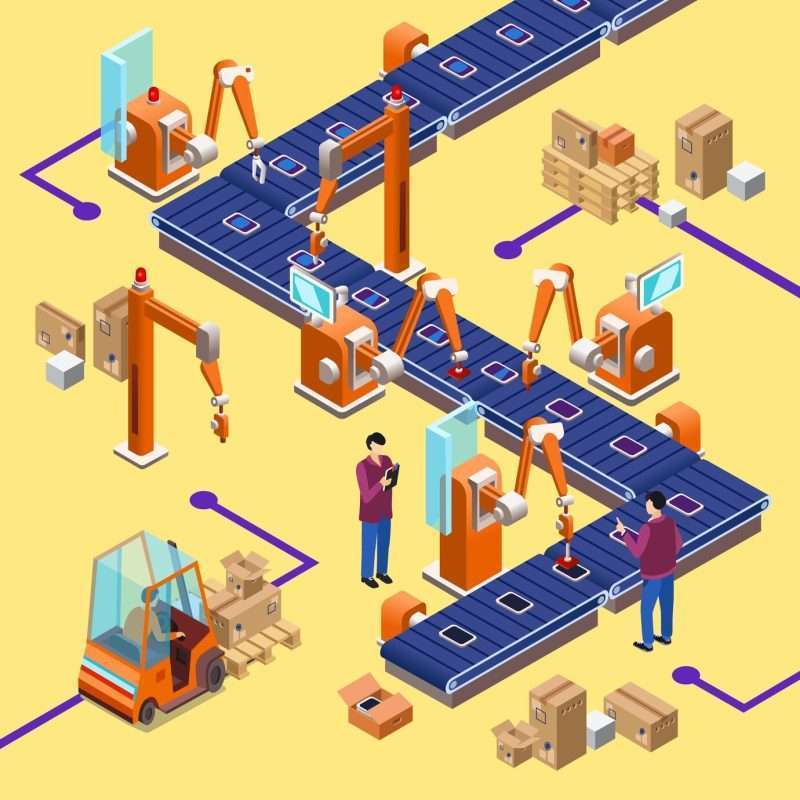The logistics industry is abuzz with changes as 2024 unfolds. As the backbone of global ecommerce and trade, the logistics industry constantly changes with technological innovations, shifting consumer expectations, and environmental priorities.
And it doesn’t look like it’s hitting the brakes anytime soon.
Keeping up with these trends is a must for businesses who wish to stay competitive and efficient in this field.
Below, we break down the top logistics trends shaping the industry in 2024 and why they’re so important.
Reasons That Define Trends in Logistics
Every business faces a constant truth: change and disruption are inevitable. With the intense competition in online shopping, logistics companies must adopt technologies and smart strategies quickly to stay ahead.
Market trends significantly influence the industry, making it essential for businesses to stay alert – and ready – for the next big thing.
Three years after the pandemic, the economic landscape has fluctuated. Businesses and manufacturers are focusing on recovering during a time of inflation and changing customer habits. These economic twists have shoppers tightening their belts, influencing how companies plan and move forward.
In facing these challenges, the logistics world is gearing up for a future that needs fresh ideas and adaptability. Companies must tackle supply chain hiccups, monitor costs, and ensure compliance. The way to do that? The answer lies in the latest trends.
Top 7 Logisitics Industry Trends in 2024

Image by pch.vector on Freepik.
Trend 1: The Acceleration of Digital Transformation
Digital transformation in logistics is growing at a rapid pace, and it’s all about making things smarter, faster, and cheaper in 2024. AI, automation, and Internet of Things (IoT), while not new, are essential for boosting efficiency and managing costs.
AI and automation are expanding into areas like process automation and predictive analytics, not just for innovation but to boost efficiency and stay competitive. Meanwhile, IoT is transforming supply chains by connecting previously isolated assets for enhanced visibility and resilience.
Together, these technologies set the pace, ensuring logistics operations are more streamlined, transparent, and ready for future challenges.
Trend 2: Facing Labour Shortages
The logistics industry faces the challenge of a global labour shortage, which both thins operations and drives costs higher. Harvard Business Review highlights this as a global skills gap issue, impacting everything from making goods to delivering them.
This tightening of workers drives companies to get creative with tech solutions, from smart warehousing technology to testing the waters with autonomous trucks. The aim is to make the best out of a tight situation by optimising what and who they have.
FreightWaves reports that recruiting and retaining qualified workers is a significant concern for supply chain executives. That’s why 74% plan to enhance their technology investments to create roles that get the job done and draw in new talent.
Trend 3: Emphasis on Sustainable Logistics Practices
The logistics industry is going green as consumer demand for sustainability grows. This shift includes adopting electric vehicles, using eco-friendly packaging, and choosing cleaner transportation methods.
The goal is to make operations more environmentally friendly by reducing carbon emissions and minimising waste. Influenced by Gen Z’s push for sustainability, Business Wire found that 90% of Gen X consumers are willing to pay extra for sustainable products.
Plus, sustainability offers significant benefits, including lower fuel costs and more efficient logistics from procurement to route planning and reverse logistics.
In light of these sustainability efforts, businesses are also becoming conscious of unnecessary utility spending. When busineses go all out streamlining utilities with Utility Bidder it allows them to prioritise eco-friendly practices, which is both good for the planet and business.
Trend 4: The Rise of Last-Mile Delivery
E-commerce is booming, reshaping logistics, especially when getting orders to doorsteps. With global e-commerce sales expected to hit $6.3 trillion by 2024, the rush is on for logistics companies to deliver faster and smarter.
Last-mile delivery, the step that brings products to customers, is now more important than ever. With the surge in e-commerce, companies are getting creative to keep up, adopting new solutions like micro-fulfilment centres, delivery robots, and autonomous vehicles to ensure fast, cost-effective delivery.
As 2024 unfolds, the push is to drive last-mile delivery solutions. Localised distribution centres and better route planning, among automation, are some solutions we can expect.
Trend 5: Higher Demand For Real-Time Information
Today’s customers want to know exactly where their orders are and when they’ll arrive, and they’re not shy about it. Real-time updates on order status and delivery times are becoming the norm, not the exception. For logistics companies, getting the right technology in place to keep everyone in the loop is crucial.
The higher demand for instant information is changing logistics, making real-time data essential for smart decision-making and smoother operations. Thanks to things like IoT and AI, businesses can have a live feed of their supply chain. These instant insights allow businesses to adapt quickly to changes or hiccups, helping avoid empty shelves, keep drivers safe, and boost the bottom line.
Trend 6: Blockchain Technology Is A Must-Have
Blockchain is reshaping logistics by enhancing security and transparency. It offers a tamper-proof record of transactions, which cuts costs and streamlines operations big time. This technology marks a leap forward, establishing a new level of trust in business transactions and simplifying daily operations.
With blockchain technology, logistics gets a transparent and secure way to log data, from tracking shipments to managing fleets without the fuss of middlemen. This means smoother transactions and a clear record of everything from fleet maintenance to any damages. By storing information in secure blocks on a shared digital network, blockchain cuts the need for constant checks. It boosts visibility, ensuring everything runs like clockwork.
However, it’s not all smooth sailing. Blockchain technology requires a hefty upfront investment, and the software solutions are often custom-developed, adding to the cost.
Trend 7: Greater Supply Chain Agility
Agility and transparency in supply chains are essential to stay in the race in today’s digital whirlwind. Being able to adapt and respond with speed quickly is the new benchmark for competitiveness. This agility lets companies tackle demand and supply fluctuations head-on, cutting lead times, avoiding stock shortages, and maintaining inventory.
Technology is evolving by the minute, and supply chain trends are shifting fast. The real champions in 2024 will be those who can pivot quickly without losing their balance. But it’s not all about speed. It’s about smart resource use, scaling wisely, and planning.
Final Thoughts
As we wrap up the top logistics trends shaping 2024, the industry is poised for another major transformation. From embracing digital innovations to optimising last-mile delivery and supply chain agility, these trends highlight the need for businesses to stay on the ball.
But beyond logistics, staying informed and ahead in every aspect of life, including style, grooming, lifestyle, and travel, is equally important. Male Standard is the go-to destination for men looking to navigate these areas with confidence and become the best version of themselves.
Sources:
https://forderline.com/the-future-of-logistics-predictions-and-trends-for-2024-and-beyond/
https://www.magaya.com/5-logistics-trends-to-watch-in-2024/
https://3pllinks.com/top-logistics-trends-for-2024/
https://zhenhub.com/blog/trends-in-logistics-2024/
https://www.cleo.com/blog/logistics-management-trends



